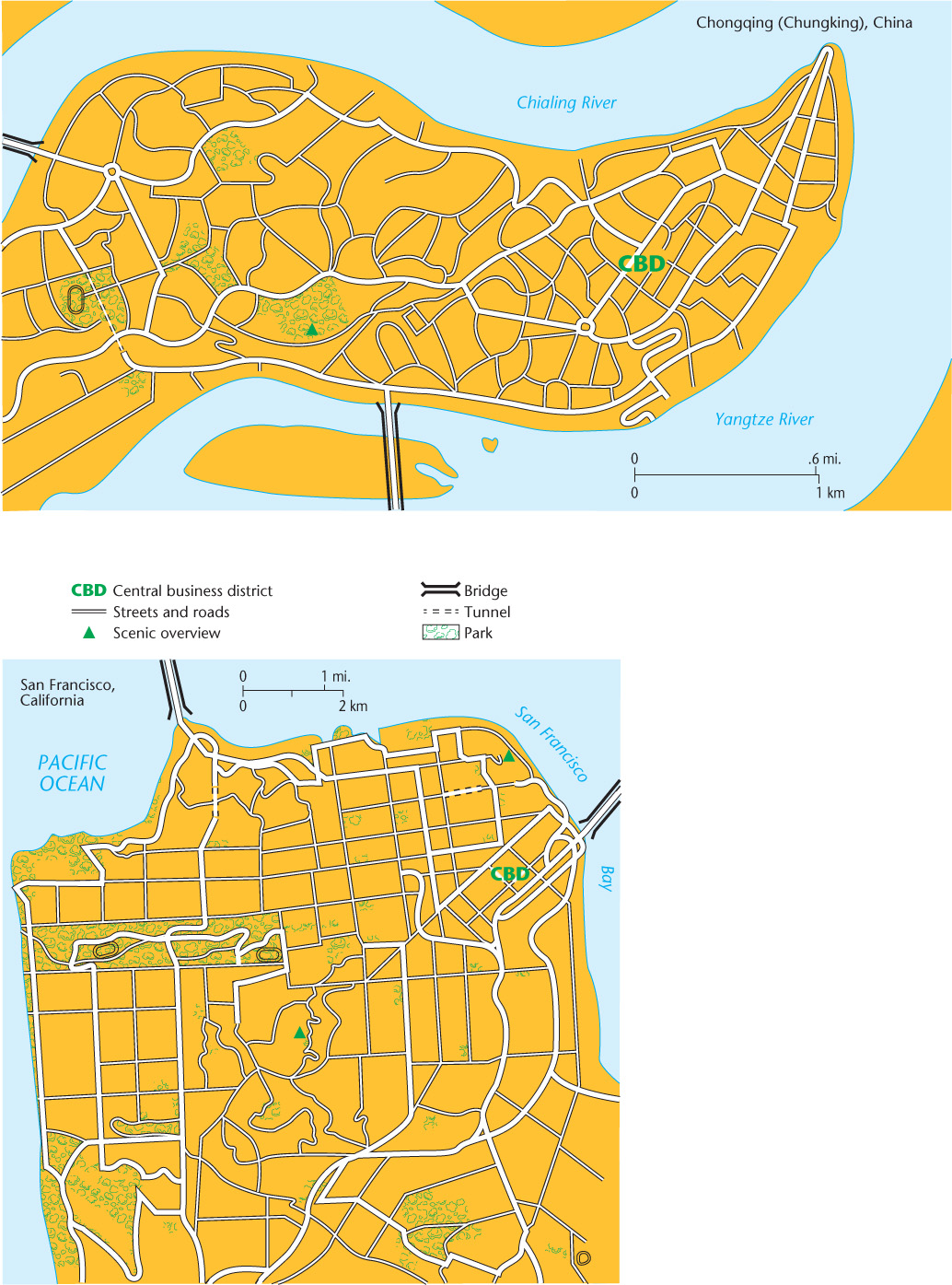
Figure 1.12 Chongqing (Chungking) and San Francisco. Both these cities are among the largest in their respective countries. Both developed on elongated, hilly sites flanked on all but one side by water, and both were connected in the twentieth century by bridges leading to adjacent land across the water. In certain other respects, too—such as the use of tunnels for arterial roads—the cities are similar. Note, however, the contrast in street patterns. In Chongqing, the streets were laid out to accommodate the rugged terrain, but in San Francisco, relatively little deviation from a gridiron pattern was permitted. Note, too, that although San Francisco has a much smaller population than Chongqing, it covers a far larger area. What do these contrasts suggest about the relative merits of environmental determinism and possibilism? About the role of culture?